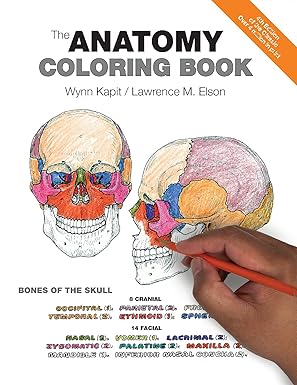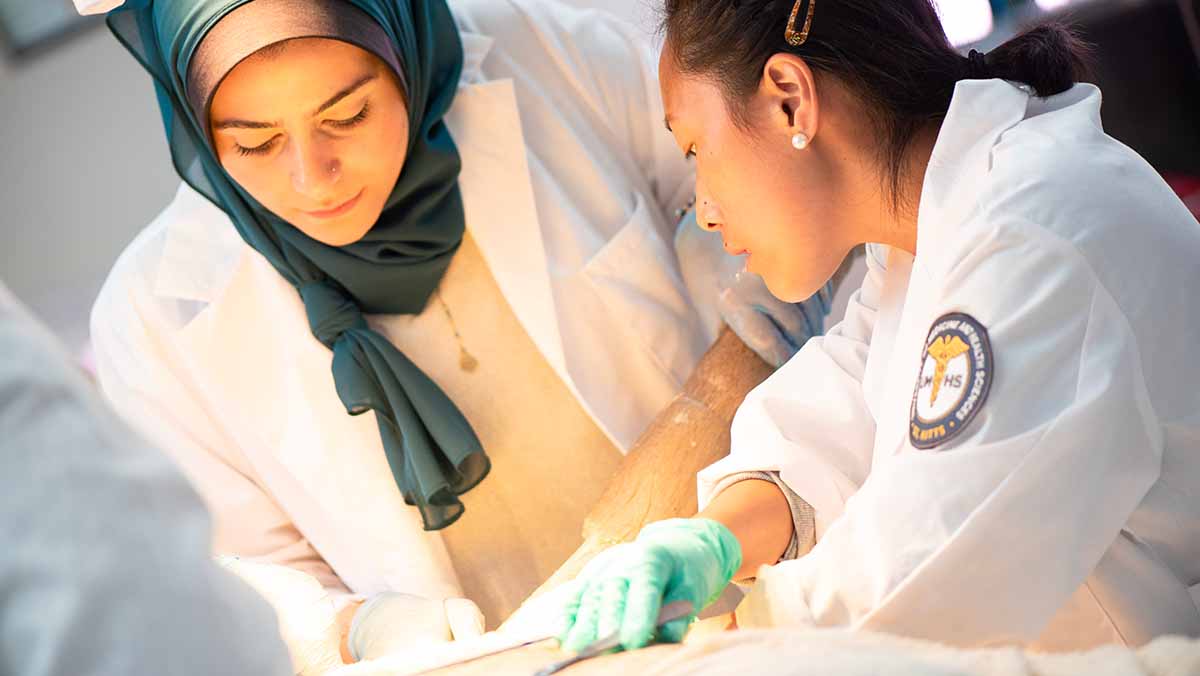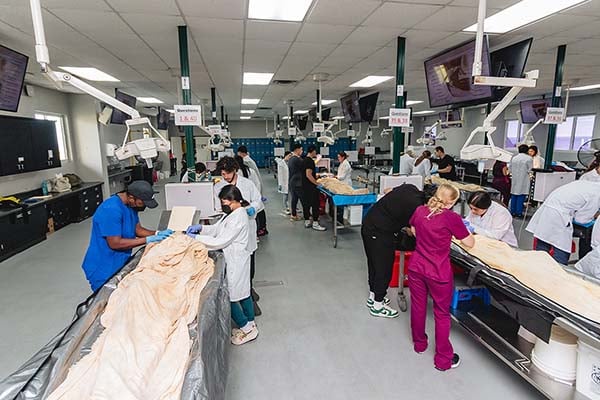Last Updated on July 4, 2025 by Laura Turner
In the digital age of medical education, cadaver labs may seem like an outdated tradition. Yet, for many physicians, including myself, they represent one of the most transformative experiences in becoming a doctor. At the University of Medicine and Health Sciences (UMHS), I first encountered the cadaver lab as an MS-1 overwhelmed by the complexity of human anatomy. Years later, I returned to that same lab, not as a student, but as an instructor. Standing on both sides of the dissection table reinforced what I now know for certain: there is no substitute for hands-on dissection in shaping not just knowledge, but identity, empathy, and clinical skill.
More Than Anatomy: A Dual Perspective
As a student, I struggled to connect abstract textbook concepts with real-life anatomy. It wasn’t until I entered the lab, scalpel in hand, that the material began to take shape. Tracing nerves, separating muscle layers, and identifying vessels turned a confusing map into a three-dimensional reality. Later, as a teacher, I watched that same transformation unfold in my students. I saw confidence build, collaboration flourish, and a growing sense of clinical presence emerge. These are qualities that no digital tool has ever been able to replicate in the same way.
Dissecting a cadaver teaches more than anatomy. It trains the mind to observe closely, the hands to move with intention, and the heart to engage with care. These are the foundations not only of surgical technique but also of patient-centered medicine.
The Cadaver as Our First Patient
One of the most profound aspects of cadaver dissection is the shift it creates in students’ sense of responsibility. These bodies are not just specimens. They are our first patients. They are people who made the remarkable decision to donate their remains in the service of science and education.
This awareness and respect permeate the lab. Students begin to move more deliberately, speak more softly, and reflect more deeply. That shift marks the beginning of ethical and emotional development. During my time in the lab, I could see how working with cadavers teaches empathy, humility, and reverence for the human body, which are essential traits for any physician.
At UMHS, this respect is woven into our curriculum. Each semester concludes with a “Ceremony of Thanks,” where students come together to honor the donors and acknowledge the privilege of learning from them. It is not a formality. It is a meaningful rite of passage that reinforces the humanistic core of medicine.
Hands-On Learning That Cannot Be Replaced
Dissecting a real human body develops skills that virtual platforms and AI cannot replicate. We see firsthand how every human body is unique. Students learn how to hold and manipulate instruments, differentiate between tissues by feel, and preserve delicate structures with care. These tactile experiences are foundational for clinical rotations and surgical training.
Unlike fully virtual models, the anatomy lab gives students the opportunity to problem-solve in real time, working through the complexity of human anatomy with all its natural variations and abnormalities. To support this hands-on learning, our lab technicians—Landel and Dario—also prepare detailed prosections and provide pre-dissected cadavers for reference. These serve as valuable learning tools, especially if students accidentally damage important structures on their own cadavers. This layered approach not only builds confidence but also fosters meaningful academic exploration. In fact, access to real anatomical variability has led to several published case reports by UMHS students, including my own research on “A Unique Anatomical Variant of the Levator Scapulae Muscle.”
Collaboration, Communication, and Confidence
Dissection is a team effort. At UMHS, students are grouped into teams of seven to eight, rotating through roles that include dissection, observation, and presenting findings to the group. This collaborative model fosters not only anatomical understanding but also leadership and communication skills. For me, the peers I worked with in the cadaver lab became my first real friends in medical school. It was also the first time I truly stepped into a leadership role, helping guide my team through complex dissections, navigating uncertainty, and learning how to communicate clearly under pressure.
These interpersonal skills are often undervalued in medical education, but they are indispensable in clinical practice. Whether leading a code, delivering difficult news, or mentoring junior colleagues, physicians must be able to lead, teach, and support their teams. As a teacher, I could see similar dynamics play out among my students. The cadaver lab continues to be more than just a place to learn anatomy: it’s where future clinicians begin to grow into the roles they will one day hold.

A classic tool used by medical students for 35 years, the Anatomy Coloring Book merges anatomy learning and the relaxation of coloring.
A Vital but Vulnerable Investment
Maintaining a cadaver lab is a significant financial and logistical undertaking. It requires facilities that meet safety and regulatory standards, trained staff, and the respectful handling and eventual cremation or burial of remains. According to Scientific American, these labs can cost millions of dollars to operate. In the wake of COVID-19, many schools transitioned to virtual platforms out of necessity. Nearly 30 percent have not returned to cadaver-based learning, according to The New York Times.
Despite these challenges, I was fortunate to attend a med school that recognized the value of investing in a full cadaver-based anatomy program.
Alternate Anatomy Options
This article makes the case that cadaver dissection is key for future physicians. However, some schools are moving away from cadaver labs, opting to use plastinates or incorporating virtual reality anatomy labs into the anatomy learning process.
What do you think? Share your thoughts below!
A Tradition That Shapes the Future
As medicine becomes increasingly digitized, there is a temptation to streamline everything, including the education of future doctors. But I believe that efficiency should never come at the cost of excellence. The cadaver lab is more than a teaching tool. It is a formative experience that imparts technical mastery, emotional depth, and ethical awareness.
Returning to the lab as a teacher brought my journey full circle. You never forget your first patient, and mine was in the anatomy lab. It was there that I first began to understand not only the structure of the human body, but what it means to care for it. As a student, I developed foundational skills in leadership, communication, and teamwork, skills that proved essential when I later co-founded the student-led Caribbean Research Group and thrived during clinical rotations. Teaching in the lab reinforced those lessons and deepened my sense of purpose. Now, as I enter my residency, I carry with me not just knowledge, but the confidence and capability shaped by hands-on learning that lives in the body and lasts a lifetime.
All images courtesy UMHS. The Health Professional Student Organization, publishers of Student Doctor Network, receive affiliate income from Amazon links in this article.

